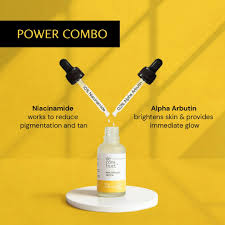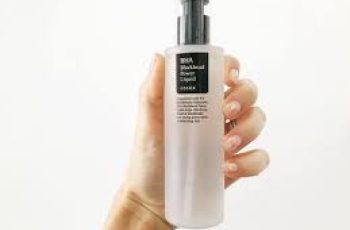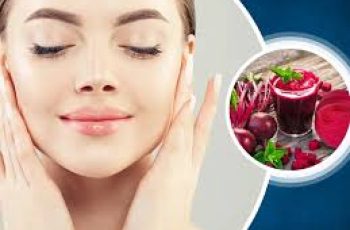
How to Use Niacinamide and Alpha Arbutin: A Complete Guide for Glowing, Even Skin
Combining skincare ingredients can feel overwhelming, but when used correctly, layering can unlock powerful results and create a smoother, brighter, and healthier-looking complexion overall.
Niacinamide and Alpha Arbutin are both standout ingredients known for their skin-brightening and hydrating powers, and they work even better when used together in a strategic skincare routine.
Niacinamide is beloved for its calming and oil-regulating properties, while Alpha Arbutin is celebrated for visibly fading dark spots, pigmentation, and uneven skin tone.
When these two actives are paired, they help the skin balance moisture while also working to brighten stubborn discoloration without irritation or dryness.
If you’re confused about how to use niacinamide and alpha arbutin correctly, don’t worry—we’re breaking it all down so you can confidently include them in your skincare routine.
What is Alpha Arbutin and Why Is It So Popular in Skincare?
Alpha Arbutin is a naturally derived compound that comes from the dried leaves of plants like bearberries, blueberries, and cranberries, which are known for their antioxidant properties.
This brightening ingredient is a gentler alternative to hydroquinone, making it suitable for all skin tones without the risk of over-lightening or triggering irritation.
It works by inhibiting the enzyme tyrosinase, which is responsible for melanin production in the lower layers of the skin, ultimately helping fade dark spots and acne scars.
By reducing melanin synthesis, Alpha Arbutin helps prevent future pigmentation from developing while gradually diminishing the appearance of existing discoloration.
The result is clearer, more even-toned skin that looks radiant, youthful, and healthier with continued use over time and when used in conjunction with a well-rounded routine.
What Does Niacinamide Do for the Skin and Why Should You Use It?
Niacinamide, also known as vitamin B3, is a multi-tasking ingredient that supports the skin barrier, helping your skin retain moisture and defend itself from daily stressors.
It regulates oil production, making it especially beneficial for oily or combination skin types prone to breakouts, blackheads, or enlarged pores.
This vitamin also improves the skin’s texture by minimizing the look of pores, softening fine lines, and smoothing rough patches over time with regular use.
Niacinamide is excellent for reducing post-acne marks and redness, improving signs of hyperpigmentation, and boosting the skin’s natural luminosity and resilience.
It’s gentle, non-irritating, and plays well with a wide range of other skincare ingredients, which makes it an easy and effective addition to almost any routine.
Which Should Be Applied First: Alpha Arbutin or Niacinamide?
When layering products, apply Alpha Arbutin first because it is the more targeted treatment and works better when it penetrates clean, dry skin without interference.
Since Alpha Arbutin is a more potent active, applying it first allows it to reach the deeper skin layers and start reducing pigmentation more effectively.
Niacinamide should be applied after Alpha Arbutin, as it helps calm the skin, maintain hydration, and reduce the chances of any dryness or sensitivity.
Niacinamide acts as a humectant, drawing water into the skin and locking it in place, which enhances the performance of more aggressive ingredients like arbutin.
This sequence ensures your skin receives the maximum brightening benefits of Alpha Arbutin while being soothed and balanced by the nourishing properties of niacinamide.
Can You Use Alpha Arbutin and Niacinamide Together?
Absolutely—these two ingredients are a match made in skincare heaven and are often combined in formulations for their complementary brightening and hydrating effects.
Since both are water-soluble and lightweight, they absorb easily into the skin without leaving a greasy or heavy residue, making them suitable for all skin types.
Alpha Arbutin targets pigmentation and dark spots, while niacinamide supports the skin’s barrier and collagen production, enhancing firmness and texture.
This duo helps exfoliate away dull surface cells, smooth uneven skin tone, and leave your complexion looking fresher, more radiant, and better hydrated over time.
When used consistently, Alpha Arbutin and niacinamide deliver noticeable results—reducing dark spots, calming inflammation, and giving skin a natural glow.
Can You Use Hyaluronic Acid With Niacinamide and Alpha Arbutin?
Yes, you can! Hyaluronic acid is a gentle hydrating agent that can be used alongside both niacinamide and Alpha Arbutin to boost moisture and improve skin texture.
Hyaluronic acid draws water into the skin, making it a perfect complement to Alpha Arbutin’s brightening effects and niacinamide’s barrier-strengthening benefits.
To avoid product overload, consider using hyaluronic acid and Alpha Arbutin in the morning to hydrate and fade dark spots, followed by SPF to protect your skin.
At night, apply niacinamide after cleansing to reduce oil production, calm redness, and help maintain a smoother, more even complexion as you sleep.
Separating them by time of day ensures all three ingredients have room to work their magic without overwhelming your skin with too many actives at once.
What Should You Avoid Mixing With Alpha Arbutin?
Alpha Arbutin is generally well-tolerated and safe to use with many other ingredients, but overloading your skin with multiple active compounds can lead to irritation.
Avoid combining Alpha Arbutin with vitamin C in the same routine, as both ingredients target pigmentation and may compete, potentially reducing each other’s effectiveness.
Using too many exfoliating acids, retinoids, or other aggressive ingredients alongside Alpha Arbutin can disrupt the skin barrier and lead to sensitivity or dryness.
To be safe, alternate between strong actives or use them at different times of the day, and always follow with a gentle moisturizer to support your skin’s health.
Keep your routine simple and effective by focusing on ingredients that work synergistically and avoiding overcomplicating your regimen with too many actives at once.
How Long Can You Use Alpha Arbutin and Is It Safe Long-Term?
Although Alpha Arbutin is potent, it is considered a gentle brightening agent suitable for daily use as long as your skin can tolerate it without irritation.
Most people can use Alpha Arbutin twice daily after cleansing, and over time, the skin adapts to this active ingredient and experiences fewer sensitivity issues.
It pairs well with many ingredients, including retinol and mild exfoliants, but always perform a patch test before starting a new product containing Alpha Arbutin.
If used consistently for three months, it’s wise to take a short break to avoid overuse and allow your skin to reset, especially if you’re using other actives too.
During this break, you can maintain results by using niacinamide, hyaluronic acid, and other barrier-supporting products to keep the skin balanced and glowing.
Can You Use Moisturizer After Applying Alpha Arbutin?
Definitely! Applying a moisturizer after Alpha Arbutin helps seal in the active ingredient and ensures it penetrates deeply to target the areas needing brightening.
If your moisturizer contains niacinamide, you’re getting a double benefit—hydration and support for the skin barrier while continuing to fade discoloration.
This combination keeps your skin soft, hydrated, and protected, which is especially important if you’re dealing with sensitivity, dryness, or environmental stressors.
Look for a lightweight, fragrance-free moisturizer that complements your actives without clogging pores or causing breakouts, especially if you have sensitive skin.
Moisturizing after Alpha Arbutin maximizes its effectiveness and helps prevent any dryness or irritation from developing as your skin adjusts to the ingredient.
Can You Use Alpha Arbutin Every Day?
Yes, you can use Alpha Arbutin daily as long as your skin tolerates it well, and it’s safe to apply it twice a day—morning and evening—for faster results.
Start slowly and build up your frequency as your skin adapts, always watching for any signs of irritation such as redness, tightness, or flakiness.
If your skin begins to show signs of stress, reduce the frequency or take a short break before reintroducing the ingredient back into your routine.
Remember that skincare is a long-term commitment, and results with Alpha Arbutin often take 8–12 weeks of consistent use to fully appear.
For best results, always pair Alpha Arbutin with sunscreen during the day to protect your progress and prevent new pigmentation from forming due to UV exposure.
Does Alpha Arbutin Darken the Skin or Cause Uneven Tone?
No—Alpha Arbutin does the opposite of darkening skin; it is known for brightening areas affected by sun damage, post-acne marks, and hormonal pigmentation.
Unlike some harsh bleaching agents, Alpha Arbutin is gentle and suitable for all skin tones without the risk of causing over-lightening or patchy discoloration.
It works slowly and steadily, helping create a uniform skin tone without triggering melanin overproduction or worsening uneven pigmentation.
Its ability to safely target pigmentation makes it a favorite among dermatologists and skincare professionals looking for effective yet non-irritating solutions.
With proper use and patience, Alpha Arbutin leaves your skin looking clearer, more balanced, and radiant without compromising its natural undertones or causing harm.
Final Thoughts: Should You Try Niacinamide and Alpha Arbutin Together?
If you’re looking to even your skin tone, fade dark spots, reduce oiliness, and boost hydration all at once, the combination of niacinamide and Alpha Arbutin is unbeatable.
These ingredients are gentle, effective, and suitable for almost all skin types, offering noticeable results with minimal risk of irritation or side effects.
For best results, apply Alpha Arbutin first on clean skin, then follow with niacinamide and a lightweight moisturizer to lock in hydration and soothe the skin.
Always wear sunscreen during the day to protect your results and keep pigmentation from returning, especially if you’re treating sun-induced dark spots.
With consistency, care, and the right layering techniques, niacinamide and Alpha Arbutin can transform your skin and give you a smoother, more even complexion.


